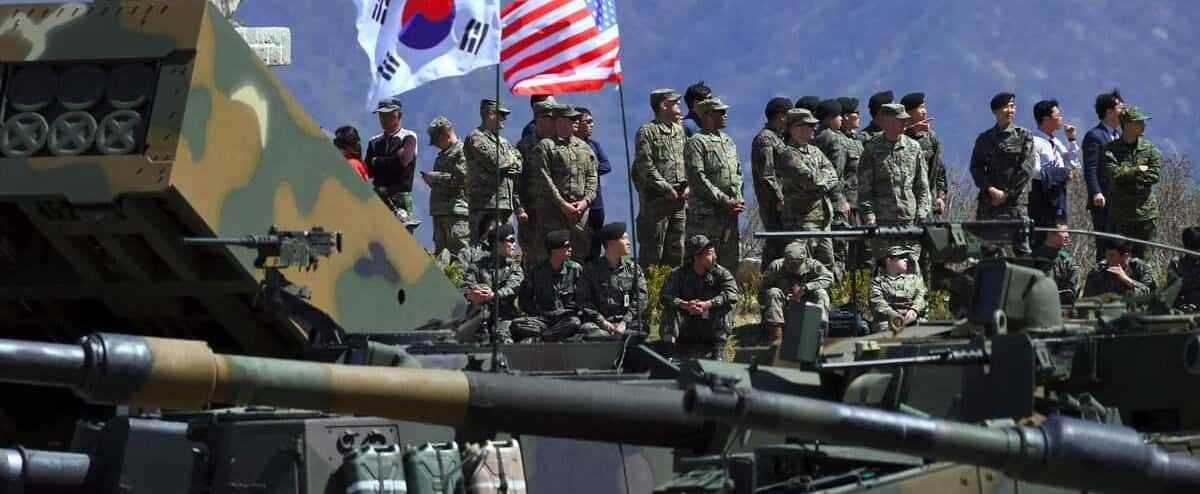Seoul | South Korea and the United States launched several missiles at sea targets on Wednesday, the day after Pyongyang fired a ballistic missile that passed over Japan.
A North Korean intermediate-range ballistic missile (IRBM) flew over Japan on Tuesday, a first in five years which led Tokyo to activate its warning system.
According to the South Korean General Staff, the South Korean and American armies on Wednesday each fired two ATACMS short-range ballistic missiles “to precisely hit a virtual target” in the Sea of Japan.
These exercises “showed that we are capable and ready to neutralize the origin of the provocation while maintaining a constant monitoring position”, he added in a press release.
The South Korean military, however, confirmed the failed launch of a fifth Hyunmoo-2 short-range ballistic missile, which crashed to the ground shortly after launch.
The missile warhead did not explode and no one was injured, according to the staff. But a major fire broke out and caused panic in the town of Gangneung on South Korea’s east coast, with many worried residents calling the town hall, authorities said.
On Tuesday, South Korean and American fighter jets had already conducted precision strike exercises, according to Seoul, with the dropping of bombs on a virtual target in the Yellow Sea by two South Korean F-15K fighter jets.
The spokesman for the American National Security Council John Kirby, interviewed by CNN, indicated that it was a question of “responding to provocations from the North, to ensure that we can demonstrate our own capacities”.
Negotiations without conditions
“It doesn’t have to come to that. We have made it clear to Kim Jong Un that we are ready to sit down at the table without preconditions,” he added.
The South Korean army also announced on Wednesday the return to the region of the American nuclear-powered aircraft carrier USS Ronald Reagan, which carried out exercises with the South Korean navy in September.
North Korea, which in September adopted a new doctrine making its status as a nuclear power “irreversible”, this year stepped up its firing and launched an intercontinental ballistic missile (ICBM) for the first time since 2017.
Tuesday’s shooting was the fifth in ten days. Pyongyang did not comment on the matter in official media.
The United Nations Security Council is due to meet on Wednesday on this issue.
According to Seoul and Tokyo, the missile traveled around 4,600 km, possibly the longest distance Pyongyang has ever reached in its tests. Missiles are usually fired in a lofted trajectory to avoid flying over neighboring countries.
According to experts and senior officials, the missile is a nuclear-capable Hwasong-12 IRBM. It was first tested in 2017 and is able to reach US bases on the island of Guam.
” Escalation “
UN Secretary General Antonio Guterres denounced an “escalation” and called on Pyongyang “to resume dialogue” in order to achieve “complete and verifiable denuclearization of the Korean peninsula”.
South Korean President Yoon Suk-yeol for his part deplored a “provocation” which “clearly violates universal principles and United Nations standards”, and ordered “a firm response”.
Seoul, Tokyo and Washington have recently increased joint maneuvers, organizing the first trilateral anti-submarine exercises in five years on September 30, a few days after large-scale maneuvers by the American and South Korean naval forces.
About 28,500 American troops are stationed in South Korea to help protect it from its neighbor.
South Korean and American officials have been warning for months that North Korean leader Kim Jong Un is preparing to conduct another nuclear test.
This could take place after the congress of the Chinese Communist Party which begins on October 16, several senior officials of the American command for Asia-Pacific indicated this weekend.
“Despite today’s missile launch (…), North Korea’s intention to conduct a nuclear test will remain unchanged,” Yang Moo-jin, a professor at the Institute, told AFP. University of North Korean Studies.
“Pyongyang is likely to ridicule today’s missile launch – especially since one of the launches failed,” he added, referring to Wednesday’s South Korean and American launches.
Pyongyang has tested atomic bombs six times since 2006. The latest and most powerful test came in 2017, with an estimated yield of 250 kilotons.
